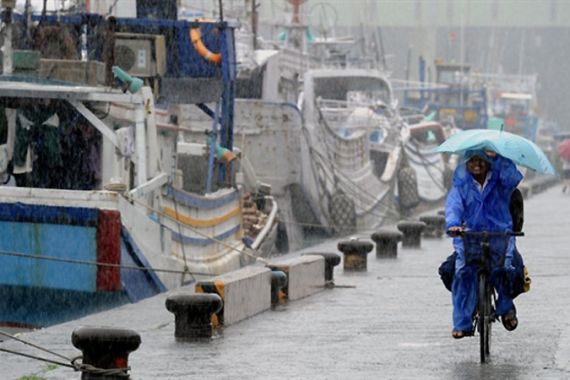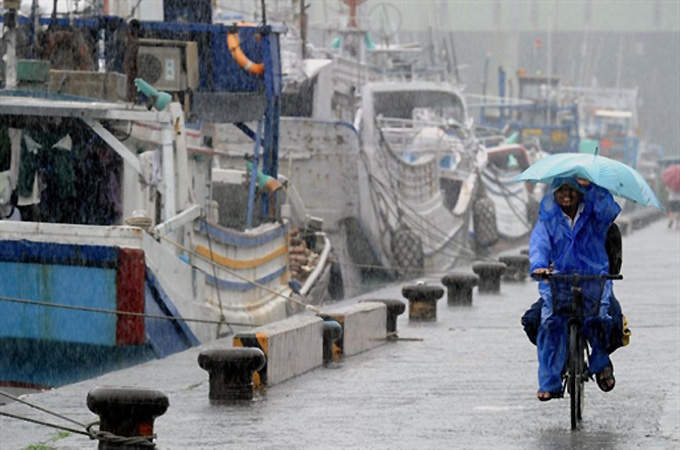Typhoon Songda hits southern Japan
Despite having weakened somewhat, the storm is yet another natural disaster to hit the already stricken country.

 |
| Typhoon Songda brushed the Philippines at the weekend before heading for southern Japan [AFP] |
The first major storm of the season is now making its way across southern Japan.
It has weakened somewhat, but Tropical Storm Songda is yet another natural disaster to hit the stricken country in recent times.
Keep reading
list of 4 itemsCould shipping containers be the answer to Ghana’s housing crisis?
Thousands protest against over-tourism in Spain’s Canary Islands
Holding Up the Sky: Saving the Indigenous Yanomami tribe in Brazil’s Amazon
This has been quite a long-lived storm, and we have been tracking its progress for more than a week now. Thankfully, it has by-and-large stayed clear of the major land masses in the Western Pacific.
It brushed the Philippines, passing to the northeast of Luzon as a typhoon before drifting east of Taiwan on its way towards Japan.
At its peak it had sustained winds of 240kmph making it a super typhoon (the equivalent of a category 5 hurricane on the Safir-Simpson Scale).
The fact that the eye of the typhoon remained over the ocean means that it has been able to maintain its warm water source, which has thus continued to feed the storm.
As a result, the outer rain bands have produced major rain events for all in its path along with very high seas. It is now weakening over the slightly cooler waters to the south of Japan and the northwest Pacific.
Feeling the effects
As the typhoon made its way towards Kyushu on Sunday morning, Japan’s Meteorological Agency issued a mudslide warning for Kagoshima, where recent volcanic eruptions left the ground weak and prone to such events.
Kagoshima received 121mm of rain on Saturday. A little further south, Naze had a whopping 160mm in the same time period. Subsequently, 15,400 households suffered power cuts and 426 households lost their water supply.
Overall, the combination of strong winds and heavy rain left at least 58 people injured and 278,000 households without power.
Tokyo has also been feeling the effects of the storm, which has now been downgraded to a tropical storm. Flights were cancelled for a time.
Elsewhere, concerns remain over Japan’s crippled Fukushima nuclear plant, which officials admit is not fully prepared to deal with violent storms. Fortunately the storm has now passed to the south of the site.
However, the typhoon has already brought heavy rain to the Fukushima region and there is still more to come. This has prompted worries that runoff water may wash away radioactive materials from the land into the Pacific Ocean.
The plant operator, Tokyo Electric Power Company (TEPCO) has been pouring synthetic resins over the complex in an attempt to stabilise the plant. More work needs to be done, not just now but also to ensure that future typhoons would not spread radioactive materials into the environment.